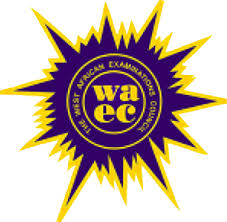WAEC MAY/JUNE 2019 PRACTICAL SPECIMEN FOR PHYSICS, CHEMISTRY, BIOLOGY, AGRIC SCIENCE & ANIMAL HUSBANDRY

PHYSICS PRACTICAL SPECIMEN:
Question 1
(1) Pendulum Bob
(2) Retort stand and clamp
(3) Thread
(4) Stopwatch/clock
(5) Metre Rule
(6) Split cork.
Question 2
(1) Ray box with illuminated objects (cross wire)
(2) Convex lens(f = 15cm)
(3) Screen
(4) Metre rule.
(5) Lens Holder.
Question 3
(1) Battery
(2)Two dry cells(2×1.5v)
(3) Voltmeter.
(4) Resistor labeled R = 2Π
(5) Key
(6) Resistance box labelled R
(7) Seven connecting wires.
————————————————————-
CHEMISTRY PRACTICAL SPECIMEN:
(1)
Great care should be taken to ensure that the information given in items 2 and 3 below does not reach the candidates either directly or indirectly before the examination.
(2)
In addition to the fittings and reagents normally contained in a chemistry laboratory, the following apparatus and materials will be required by each candidate.
(a)one burette of 50cm³ capacity.
(b)one pipette, either 20cm³ or 25cm³. All candidates at one centre must use pipettes of the same volume. These should be clean and free from grease.
(c)the usual apparatus for titration.
(d)the usual apparatus and reagents for qualitative work. Including the following with all reagents appropriately labelled.
(i) dilute sodium hydroxide solution.
(ii) dilute hydrochloric acid.
(iii) dilute trioxonitrate(v) acid
(iv) silver trioxonitrate(v) solution.
(v) barium chloride solution.
(vi) aqueous ammonia.
(vii) lime water.
(viii) red and blue litmus paper.
(ix) dilute tetraoxosulphate(vi) acid.
(e) Spatula
(f) filtration apparatus.
(g) one beaker
(h) one boiling tube
(i) four test tubes.
(j) starch solution as indicator.
(k) mathematical table/calculator
(l) wash bottle containing distilled/deionized water.
(3) Each candidate should be supplied with the following where n is the candidate’s serial number.
(a) 150cm³ of sodium trioxosulphur sulphate(vi) solution in a corked flask or bottle, labelled “An”. These should all be the same containing 6.0g of Na2S2O3 per dm³ of solution.
(b) 150cm³ of iodine in potassium iodide solution in a corked flask or bottle labelled “Bn”. These should all be the same containing 2.5g of I2 and 1.67g of KI per dm³ of solution.
(c) One spatulafull of a uniform mixture of NaCl and CuCO3 in a specimen bottle labelled “Cn”. The components of the mixture should be in the ratio 1:2 by mass
4. In all cases, more materials may be issued if required.
5. The actual concentrations of A and B must be stated on the Supervisor’s Report form. The candidates will assume that the concentrations are exactly as stated in the question paper.
—————————————————————
BIOLOGY PRACTICAL SPECIMEN:
Group I:
Specimen A – Thermometer
Specimen B – Rain guage
Specimen C – Meter rule
Specimen D – Sweep net
Specimen E – Wind vane
Specimen F – Quadrat
Specimen G – Filter paper
Specimen H – Quill feather
Specimen J – Palm frond(freshly procured)
Group II:
Specimen P – Male cockroach
Specimen Q – Grasshopper
Specimen R – Small mammal/Rat/Mouse
———————————————————
AGRIC. SCIENCE PRACTICAL SPECIMEN:
Specimen A – Rake
Specimen B – Shears
Specimen C – Shovel
Specimen D – Cutlass
Specimen E – Whelbarrow
Specimen F – Clay soil
Specimen G – Loamy soil
Specimen H – Sandy soil
Specimen I – Earthworm
Specimen J – Onion
Specimen K – Tomato
Specimen L – Carrot
Specimen M – Amaranthus
Specimen N – Okro
Specimen O – Spinach
Specimen P – Dried animal blood(labelled)
Specimen Q – Bone meal(labelled)
Specimen R – Rice bran
Specimen S – Catfish
ANIMAL HUSBANDRY PRACTICAL SPECIMEN:
Typed by Earlyanswer.com
SPECIMEN A. Horn of cattle
SPECIMEN B. Fresh meat (labeled)
SPECIMEN C. Honey (labeled)
SPECIMEN D. Sickle
SPECIMEN E. Feeding trough
SPECIMEN F. Watering trough
SPECIMEN G. Knife
SPECIMEN H. Debeaker
SPECIMEN I. Dehorning saw
SPECIMEN J. Groundnut cake
Typed by Earlyanswer.com
SPECIMEN K. Bone meal
SPECIMEN L. Elephant grass
SPECIMEN M. Calopogonium
SPECIMEN N. Fish meal
SPECIMEN O. Lantern
SPECIMEN P. Tick
SPECIMEN Q. Roundworm
SPECIMEN R. lice
Categories: WAEC



Pls can u help to explain how to prepare the reagents necessary for chemistry practical especially the quantitative analysis
by Amoschuks on May 1, 2019
Pls can u help explain how to prepare the reagents necessary for chemistry practical especially the quantitative analysis
by Amoschuks on May 1, 2019